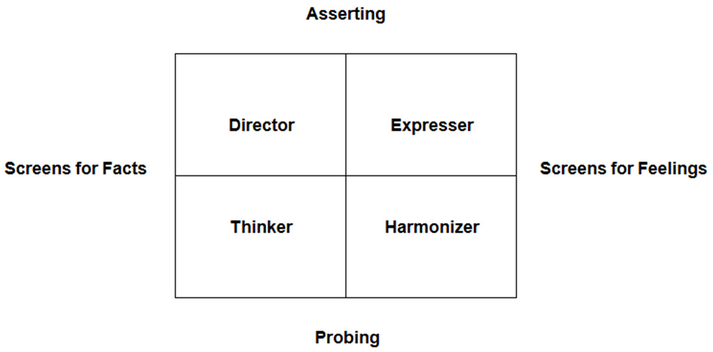
Where Do Communication Styles Come From?
Our research has shown that there are four basic styles of communicating. These styles affect all of our communications with other people.
Since these four styles have such an impact on our relationships, why do we have them in the first place? Wouldn’t it be simpler if we were all the same? Why do we need different styles?
For an answer, we turn first to the science of anthropology.
Claude Levi-Strauss has noted the existence of four universal roles – or archetypes – that exist in societies around the world. These four archetypes may form the basis for our styles of communicating.
 The Ruler
The Ruler
The first archetype is the ruler, the person who makes decisions, dispenses justice, divides wealth, appoints successors. He is omnipresent in primitive societies ranging from the Anasazi Indians to early Asian tribes. In primitive societies, there could be just one leader. In our society, there can be many: governors, presidents, CEOs. Regardless of title, however, their role is to lead.
The Story-Teller
The second archetype is the story-teller. His or her role is to entertain, to be a social mirror. The story-teller gives the tribe its memory, its cultural beauty, its intellectual life, its sense of humor, and its art. Through their stories and teachings, story-tellers provide inspiration and wisdom.
The Problem-Solver
The third archetype is the problem-solver. They build, hunt, farm, cook, clean, scout, fight and make crafts. They create tools, drive cattle, build skyscrapers, design computer systems. They like to excel in a specific branch of knowledge or cultivate a particular skill.
The Care-Giver
The fourth archetype is the care-giver. Many can hold this role: doctors, nurses, mid-wives, priests, teachers. Their focus is predominantly in the realm of human relationships. They use their practical skills to care for people and to heal them. They endeavor to make sure that people feel loved. Where the story-teller may heal through inspiration, the care-giver heals through nurturing.
As you’ll soon see, each of these archetypes corresponds to one of the four styles of communicating. The leader is the Director, decisive and action-oriented. The story-teller is the Expresser, animated and entertaining. The problem-solver is the Thinker, meticulous, and process-oriented. And the care-giver is the Harmonizer, people-oriented and nurturing.
This, then suggests one solution to the question of why we communicate in these four fundamental ways. Our styles of communicating grew out of the needs of society.
Carved out for us by our ancestors, and ingrained in our culture like ancient riverbeds, our styles of communicating naturally flow in one of these four directions because society needs them to thrive.
| Previous: Communication Styles at Work in Other People | Next: Personality Theory vs. Communication Styles |
2 Comments
Add yours+ Leave a Comment
You must be logged in to post a comment.






[…] helps answer the question, “where did our communication styles come from?” Psychology, and particularly research into personality, further reinforces the idea that there […]
[…] Related Post: Where do our communication styles come from? […]